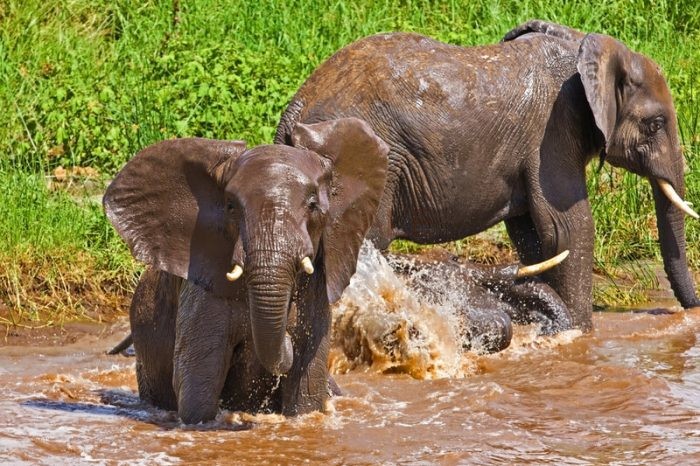Mt Kilimanjaro National Park
Related Tours

Northern Circuit Safari
Complete Northern Tanzania Circuit Safari across Ngorongoro Conservation Area, Serengeti National Park, L.Manyara National Park and Tarangire National Park
Africa’s highest mountain and one of the continent’s magnificent sights, It has three main volcanic peaks, Kibo, Mawenzi, and Shira.
At 5896m Mt Kilimanjaro, Africa’s highest mountain and one of the continent’s magnificent sights, It has three main volcanic peaks, Kibo, Mawenzi, and Shira. The name itself “Kilimanjaro” is a mystery wreathed in clouds. It might mean Mountain of Light, Mountain of Greatness or Mountain of Caravans.
Above the gently rolling hills and plateaus of northern Tanzania rises the snowy peak of Mt. Kilimanjaro, it’s slopes and glaciers shimmering above the rising clouds. Kilimanjaro is located near the town of Moshi and is a protected area, carefully regulated for climbers to enjoy without leaving a trace of their presence. The mountain’s ecosystems are as strikingly beautiful as they are varied and diverse. On the lowland slopes, much of the mountain is farmland, with coffee, banana, cassava, and maize crops grown for subsistence and cash sale. A few larger coffee farms still exist on the lower slopes, but much of the area outside the national park has been subdivided into small plots. Once inside the park, thick lowland forest covers the lower altitudes and breaks into alpine meadows once the air begins to thin. Near the peak, the landscape is harsh and barren, with rocks and ice the predominant features above a breathtaking African view.
Kilimanjaro. The name itself is a mystery wreathed in clouds. It might mean Mountain of Light, Mountain of Greatness or Mountain of Caravans. Or it might not. The local people, the Wachagga, don’t even have a name for the whole massif, only Kipoo (now known as Kibo) for the familiar snowy peak that stands imperious, overseer of the continent, the summit of Africa.
Kilimanjaro, by any name, is a metaphor for the compelling beauty of East Africa. When you see it, you understand why. Not only is this the highest peak on the African continent; it is also the tallest free-standing mountain in the world, rising in breathtaking isolation from the surrounding coastal scrubland
Kilimanjaro is one of the world’s most accessible high summits, a beacon for visitors from around the world. Most climbers reach the crater rim with little more than a walking stick, proper clothing and determination. And those who reach Uhuru Point, the actual summit, or Gillman’s Point on the lip of the crater, will have earned their climbing certificates.
And their memories.
But there is so much more to Kilimanjaro than her summit. The ascent of the slopes is a virtual climatic world tour, from the tropics to the Arctic.
Even before you cross the national park boundary, the cultivated footslopes give way to lush montane forest, inhabited by elusive elephant, leopard, buffalo, the endangered Abbot’s duiker, and other small antelope and primates. Higher still lies the moorland zone, where a cover of giant heather is studded with otherworldly giant lobelias.
About Kilimanjaro National Park
Size: 1668 sq km 641 sq miles).
Location: Northern Tanzania, near the town of Moshi.
Getting there
– 128 km (80 miles) from Arusha.
– About one hour’s drive from Kilimanjaro airport.
Recent Comments
- Salma on Tarangire
Archives
Categories
- No categories
Newsletter
Connect to Us
Connect to Us
Recent Tours